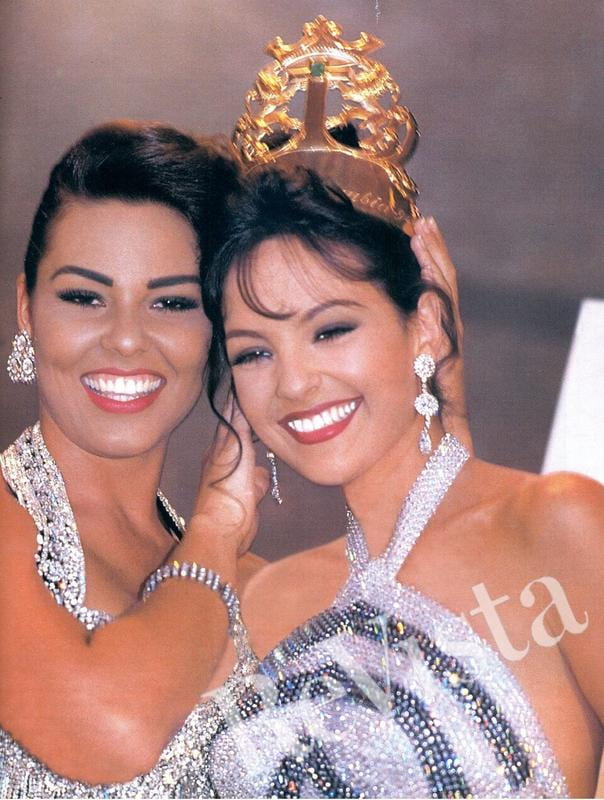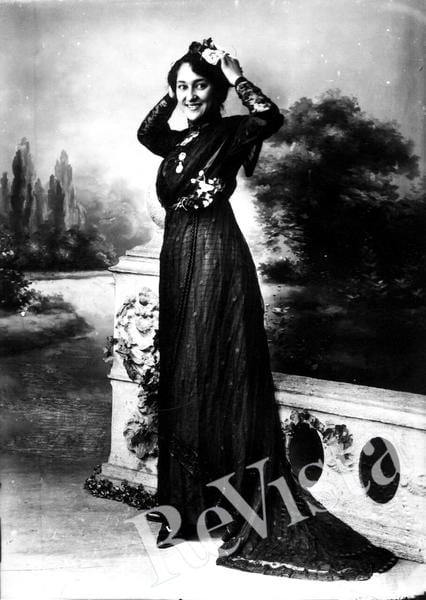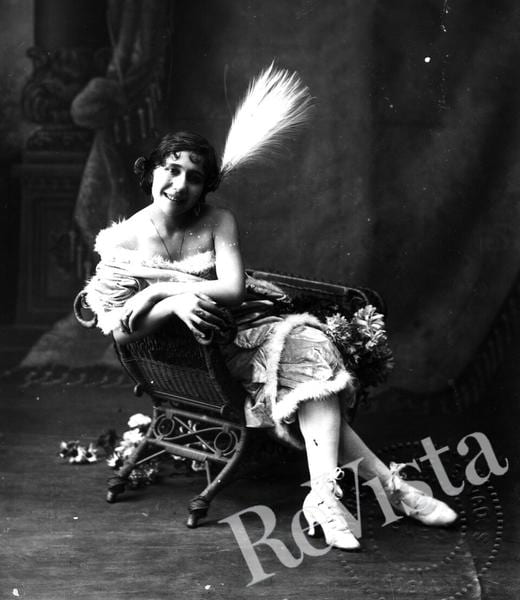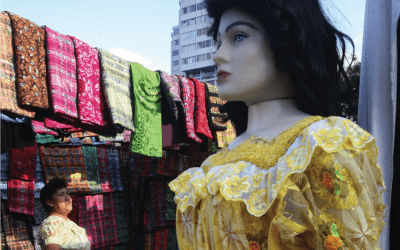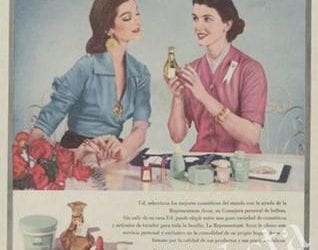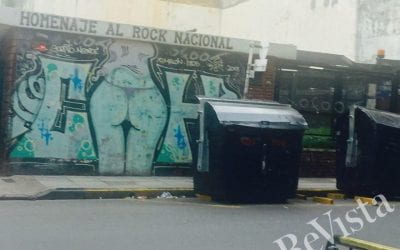Beasts and Beauty in Colombia
Power, Politics and Pageants
I encountered some of Colombia’s many contradictions during my first visit in 1985. Lush, tropical mountains arched across this South American nation, so very rich in resources and yet one where most of its citizens lived in poverty. In the southern department of Cauca, the air smelled of pine, citrus and banana, the atmosphere full of invigorating oxygen and rhythmic cumbia. There, in one particularly bucolic town, a gaunt and twitchy French cocaine mule revealed to me the addictive power of a major Colombian export, while another charming national veteran of the trade offered to sell me a pound of uncut cocaine for $700. I did the math and recognized that I could clear $50,000 on the U.S. retail market. However, being more church kid than capitalist, I passed on his offer.
In Medellín, the cocaine capital of the world at the time, one hundred different death squads brought the murder rate to nearly 2,000 annually. Police officers openly admitted to me that they acted as death squads while on the job. By my third visit to Colombia in 1991, more than 6,000 people were being killed yearly in a city of two million inhabitants; only one suspect was arrested for every thousand homicides as impunity reigned. Today, Medellin’s murder rate has bottomed out at around 775 annually, equivalent to a very bad year—like last year—in Chicago.
In Bogotá, Colombia’s proud and cool capital, legions of dazzling young women in short skirts and heels hurried along Seventh Avenue, the main drag, to pink-collar jobs that paid a meager $3 daily, real wages that had not increased since the 1950s. The Plaza Bolívar, the central square and ceremonial heart of the nation, emanated the power and presence of a planned Spanish colonial city, but I noticed that the national cathedral was scarred with bullet holes from an urban riot forty years before. Adjacent to it, the Palacio de Justicia, had once promised “laws that would bring liberty,” but the supreme court soon became a site of battle and massacre. Twenty or so blocks to the north up Seventh Avenue, army platoons patrolled between the National Library and the National Park, alert to dramatic lightning strikes from M-19 insurgents. Despite its appearance of power and permanence, I learned that the Colombian government lacked sovereignty even in its own capital city.
Over the next three decades, I fell in love with the country and its people and I took up the challenge of confronting the contradictions and complexities of Colombian reality as I reinterpreted Colombia’s history. Beauty—gendered female—emerged as a central positive expression of Colombian identity, one that masked the pervasive beasts—gendered male—that so relentlessly undermine national unity and collective pride. Colombians crave beauty given the poverty, marginalization and insecurity that they are confronted with daily and throughout Colombian history.
Beautiful women are often seen in the company of older powerful men, a coupling bringing social power on unequal terms but of mutual benefit. A nation ripped apart by civil war, Colombia became pageant-mad in the 1950s and 1960s while it slowly rebuilt a stable but exclusionary democratic system. Pageants offered a non-partisan, inclusive, civil, peaceful, and functional celebration to repair a torn and fragile social fabric. Beauty pageants appear to be democratic and modern but are often elite and exclusive, much like Colombian governance. Colombians hold more than 3,700 pageants annually (an estimated 100,000 in the United States), many of them involving children and promoting various products. Some celebrate schools, neighborhoods, culture and folklore; others serve as pyramid pageants bridging local, regional, national and international competitions.
Questions of national identity and mythologies of race find expression through beauty across the Americas, as often reflected in beauty pageants. Similar to Brazil, Mexico, Chile and Paraguay, Colombia accepts a racial hybridity formed through mestizaje, the mixing of peoples and cultures from Europe, Africa and the Americas. However, unlike Mexico, where pre-Columbian indigenous civilizations are extolled as the cradles of civilization, Colombians prefer the Spanish side of their paternity and distance themselves from what is considered the socially inferior indigenous side of mixing. Like Brazil, Colombia has a large black and mulatto population, especially in the tropical lowlands of the Caribbean and Pacific coasts, but due to customary discrimination and since most Colombians are not black and live in the Andean valleys, a black woman may not represent national beauty. However, in 2001, at the 150th anniversary of the abolition of slavery, Colombia did select a black woman as its national beauty queen. She represented the majority black and resource rich Chocó and was dubbed the “Black Barbie,” becoming a plastic commodity for white consumption; meanwhile, Colombian armed forces conducted a bombing and terrorist campaign in the Chocó for the purpose of stealing resources and land.
Similar to New Orleans, Cartagena, once a Caribbean port of entry for slaves and now the home of the national beauty pageant, evolved from its history of slavery to become a city of libertine freedom and tropical sensuousness—a vacation spot featuring revealed bodies and celebratory relief from the tensions and violence that often stalk the area. Neighboring Barranquilla and its two most famous exports, Shakira and Sofia Vergara, reinforce the image of Colombia as a white nation, but one epitomizing the buoyant sensuality of the coast.
Like the Dominican Republic, Argentina and the United States, Colombia builds its racial mythology around a white center, thus denying brown and black citizens the legitimacy of truly belonging to the nation. European colonialism established a firm foundation of white supremacy across the Americas, one still maintained throughout most of these regions. Beauty, then, often finds expression in varieties of whiteness, shading blackness with hues of brown as preferred national racial representations. Venezuela punctuates development dreams and its international petroleum economy by tending to select northern European blondes as their representative queens, while neighboring Colombia typically prefers a more Mediterranean version of whiteness. The epitome of Colombian beauty, a “typical Latin beauty,” is a young brunette with cinnamon eyes and wheat skin, a proud, sexy, and graceful colombiana who embodies the preferred and positive national image in herself. She is both modern and developed, therefore white, but also traditional and representative of a diverse and divided nation, one still seeking modern order through colonial hierarchy.
Why beauty is demanded more from women than men frequently prompts incessant academic debate between biologists and sociologists, evolutionary psychologists and cultural anthropologists. Linda Jackson in her persuasive book, Physical Appearance and Gender: Sociobiological and Sociocultural Perspectives, found evidence and arguments from partisans of both perspectives compelling, inviting more inclusive discussions to explore both sides of the bio/social border. Clearly, as social but territorial apes, we carry a long, sometimes ugly, hardwired evolutionary inheritance, yet adults still ask “Is it a boy or a girl?” as their foundational question at the birth of a child. I’ve concluded that biology provides the hardware of what we are while social constructions of gender furnish the software of how we ought to function. In a deeply conservative and Catholic country like Colombia, men and women are gendered as naturally different, not the same. The traditional dictum, reinforced by the themes of Colombian history, state that “men should be powerful, women should be beautiful,” making beauty the responsibility of women, leaving the rights of power to men.
The dysfunction of Colombia is gendered male. Patriarchal institutions in government, law, religion and the home, block evolution toward a modern democratic society. Violence in myriad forms, although at times perpetrated by females, is typically directed by and carried out by males. The poverty shared by most Colombians falls heaviest on females who tend to be poorer, paid less, and unemployed at higher rates than males. For non-elite women, social and political exclusion impedes reform and representation in a non-sovereign state, preventing protection in a socially dangerous environment. Customary racism maintains inherited privilege as it enforces notions of Colombian identity and beauty. As a result, a woman’s beauty and sexuality becomes an important socio-economic card for mobility in a society of limited opportunity and preserved inequality. In a world full of so many institutionalized beasts, beauty represents the feminine, life-giving, peaceful and functional essence all crave but few enjoy.
Beauty’s definition and symbolism varies through time and by region. In both Colombia and the United States during the 19th century, beauty frequently found deep expression in the written word and in the internal beauty of character and morality rather than in external dimensions and facial symmetry. Since women, especially mothers, were thought to enjoy superior moral and ethical status over males, a woman’s beautiful character promised salvation from life’s challenges, decreasing the distance between Heaven and Earth for men. A conservative Colombian Catholic church preserved the traditional gender responsibilities of good mothers and policed female fashion until the 1960s as international sources brought foreign fashions and an external, corporeal image of beauty in photographs, motion pictures, mass advertising, and television, thus bolstering a modern visual representation of beauty that gained momentum throughout the 20th century.
Beauty travels in the company of power. Since humans notice and value beauty, wealth often seeks and attracts—and defines—beauty. The cigar-smoking female hat makers of Norte de Santander enjoyed the reputation for being the most beautiful women in Colombia in the 1850s, distinguished as desirable and Spanish by their relative wealth and fine clothing. A half century later, gold, coffee and industry made Antioquia and its capital Medellín famous, calling attention to the beauty of its women, who were defined traditionally as biblical in their purity and as modern in their superior vigorous race. When Cali boomed in the 1950s and 1960s, caleñas gained fame as the most beautiful Colombian women, accentuated by their modern and exotic sex appeal. Oil booms brought fame to the women of Bucaramanga in the 1970s as the international cocaine economy democratized beauty at the national pageant, decisively supported by wealthy upstart drug lords.
The best of Colombian beauty often place high in the Miss Universe pageant, itself a product of the beasts of both twentieth century World Wars. The Miss Universe pageant started life from the ruins and restructuring of Europe following the Great War, then moved to the United States after the atrocities of World War II, becoming the pinnacle international capitalist pageant open to beautiful women from civilized nations. Under ownership from 1996 to 2015 by notorious pageant creep and now president Donald Trump, the Miss Universe pageant devolved into a glitzy tits and ass show, with the owner exercising his proprietary rights—like that of a slave master—by barging in on teenage contestants in their dressing rooms and then sneering narcissistically at the camera to punctuate his boorish essence. Beauty and the beast don’t just travel together in Colombia.
In 2011, I predicted that Miss Colombia would soon win the Miss Universe pageant and not because of the relative beauty of colombianas or the penchant for historians to risk predictions. The country had only won that coveted title once in 1958 when the country appeared to be rebuilding civilian government out of the ruins of civil war and dictatorship. Colombia regained the coveted crown in 2014—and almost again in 2015—after signing a Free Trade Agreement with the United States in 2011, and as it seemed to be moving out of the double horrors of Cold and Drug Wars. Paulina Vega stood gorgeous and proud, and she publicly disagreed with Trump’s racist and crude remarks about Mexicans in 2015, after which she remained queen while Trump lost his sponsors and sold the pageant. Vega won in part for her looks, but also because she represented a resource-rich nation, once again safe for international business, and, as always, coveted by powerful corporations directed mostly by aggressive and greedy white men.
Spring 2017, Volume XVI, Number 3
Michael Edward Stanfield is a professor of history and Latin American Studies at the University of San Francisco. His most recent book, Of Beasts and Beauty: Gender, Race, and Identity in Colombia (University of Texas Press, 2013), explores how beauty projects a positive national image for Colombians faced by systemic ugliness.
Related Articles
Beauty: Editor’s Letter
Is it a confession if someone confesses twice to the same thing? Yes, dear readers, here it comes. I hate chocolate. For years, Visiting Scholars, returning students, loving friends have been bringing me chocolate from Mexico, Colombia, Venezuela, Ecuador, Peru…
Globalizing Latin American Beauty
Beauty seems to matter a lot in Latin America. Whenever I arrive in the region I am struck by the disproportionate number of attractive and stylish women and men who seem to be just walking around. I am always even more taken aback by airport bookstalls crammed with…
Beauty Weighs in Argentina
Argentines believe that “success” comes from luck and not as much from hard work and efforts, according to a recent survey conducted by the University of Palermo. This may work…

